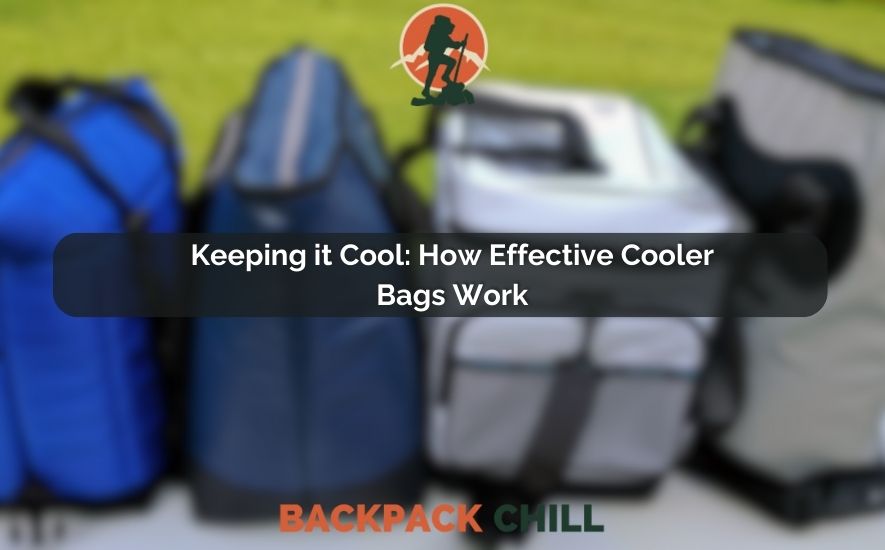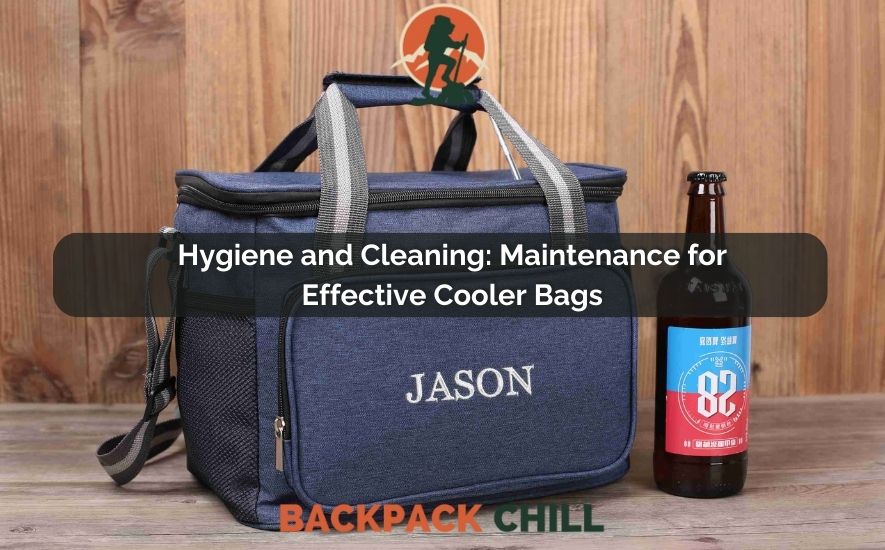Physical Address
304 North Cardinal St.
Dorchester Center, MA 02124
Physical Address
304 North Cardinal St.
Dorchester Center, MA 02124

In the realm of keeping our food and beverages fresh and chilled during outings and outdoor adventures, cooler bags have emerged as a popular solution. The convenience and portability they offer have made them an indispensable item for picnics, beach days, and camping trips. The question that often arises is: Are cooler bags truly effective in maintaining the desired temperature of their contents?
Are Cooler Bags Effective? Cooler bags are indeed effective at maintaining the desired temperature of their contents. Their insulation, material quality, and design play a pivotal role in preserving the coldness of perishables, making them a reliable choice for keeping food and beverages fresh and chilled during outdoor activities.
To address this query, we shall delve into the key features that make cooler bags stand out, exploring their insulation, material quality, and design elements that collectively contribute to their effectiveness in preserving the coldness of perishables.
One of the most critical aspects of a cooler bag is its insulation performance. Look for a bag with high-quality insulation materials that can maintain a consistent temperature for an extended period.
Advanced insulation will prevent cold air from escaping and protect your perishables from external heat. Consider cooler bags with thick, closed-cell foam insulation or advanced insulation technologies like radiant barriers for optimal cooling efficiency.
The size of the cooler bag matters, as it should be able to accommodate your desired food and drink quantity. Assess your needs and select a cooler bag that offers sufficient capacity without being too bulky or cumbersome. Opt for a bag that can store an adequate amount of items while remaining manageable and easy to carry, even when fully loaded.
A durable cooler bag is essential for outdoor adventures and regular use. Look for models constructed from robust and long-lasting materials like high-density fabrics, reinforced stitching, and sturdy zippers. Durable cooler bags can withstand rough handling and ensure that your food and beverages stay protected in various environments.
A leak-proof cooler bag is crucial to prevent any spills and keep your food dry. Choose a bag with a waterproof lining or a welded-seam design to avoid leakage accidents. Additionally, easy-to-clean materials such as antimicrobial lining will help maintain hygiene and prevent unpleasant odors after use.
Consider the portability of the cooler bag, especially if you plan to carry it for long distances or while hiking. Look for features like adjustable padded shoulder straps, reinforced handles, and ergonomic designs that distribute weight evenly. A lightweight and comfortable cooler bag will make your outings more enjoyable and hassle-free.
Versatility is an important factor to consider when choosing a cooler bag. Bags with additional compartments and pockets provide extra storage space for utensils, napkins, and other essentials. These features enhance the organization of your belongings and make your outdoor experience more convenient.
The ability of a cooler bag to retain ice is crucial for maintaining the freshness of your food and drinks. Look for models with innovative ice retention technology, such as multiple layers of insulation and airtight seals. Cooler bags with longer ice retention times will ensure your items stay chilled throughout your entire trip.

To prevent warm air from seeping into the cooler bag and compromising its cooling abilities, an airtight seal is crucial. Manufacturers use sturdy zippers, hook-and-loop fasteners, and even magnetic closures to ensure a tight seal. Quality cooler bags come with reinforced seams to prevent air leaks, which would otherwise lead to temperature fluctuations.
Ice packs and gel inserts play a significant role in keeping the contents of cooler bags chilled. These frozen components are typically made from non-toxic, water-based gels or phase-change materials.
When placed inside the cooler bag, they absorb heat from the surroundings and undergo a gradual melting process. This process helps maintain a consistent low temperature within the bag, ensuring that perishables stay fresh for longer.
Some advanced cooler bags have a reflective outer layer. This feature prevents external heat from being absorbed into the bag, thus further enhancing its cooling efficiency. The reflective material bounces back sunlight and heat, helping to maintain a cooler environment inside the bag.
While cooler bags aim to keep the contents cool, they also generate condensation due to the temperature differences between the inside and outside environments. To avoid potential water buildup, quality cooler bags are designed with ventilation systems. These systems allow air circulation, effectively dissipating any accumulated condensation.
To optimize the performance of a cooler bag, proper packing and pre-cooling of the contents are essential. Cold items should be pre-chilled before placing them inside the cooler bag. Packing the cooler bag efficiently, with minimal air gaps, also helps maintain the cold temperature for longer periods.

Proper organization inside the cooler bag can significantly impact its performance. Arrange items neatly, leaving enough space for air circulation. Separate perishables from drinks, and consider using different compartments or containers for various food types to prevent cross-contamination.
The type and quality of ice packs you use can make a substantial difference. Opt for high-quality reusable ice packs made of materials designed to keep items colder for longer periods. They are more effective than traditional ice cubes, as they don’t create a messy slush that can spoil food.
A partially empty cooler bag can lead to quicker temperature fluctuations, reducing its effectiveness. Whenever possible, fill any empty spaces with extra ice packs or even crumpled newspaper to maintain consistent cooling conditions.
Every time you open the cooler bag, warm air enters and comprises the internal temperature. Minimize the frequency of opening it, and when you do, retrieve all the items you need at once to reduce unnecessary exposure to external temperatures.
The surrounding environment can impact the cooler bag’s performance. Whenever feasible, place the bag in a shaded area to shield it from direct sunlight, which can accelerate the warming of its contents.
While it may seem counterintuitive, leaving some melted ice water in the cooler can actually help maintain the internal temperature. As the ice melts, it continues to provide a cooling effect, and the remaining water acts as an insulator.
Putting hot or warm items directly into the cooler bag can raise the internal temperature and affect the cooling efficiency. Allow hot foods to cool down at room temperature before placing them in the cooler.

Cooler bags are essential tools for keeping food and beverages fresh during outdoor activities, picnics, and travel. To ensure their effectiveness and safety, it is crucial to maintain proper hygiene and cleanliness. Regular cleaning not only prolongs the life of the cooler bag but also prevents the growth of harmful bacteria that could contaminate your food.
Before using the cooler bag for the first time and after each use, it’s essential to inspect it for any signs of wear, tear, or mold. Check for any damaged zippers, tears in the fabric, or broken straps. In case of damage, repair or replace the cooler bag to prevent any potential contamination.
A regular cleaning routine is vital for maintaining a hygienic cooler bag. After every use, empty the bag completely and remove any loose crumbs or debris.
Wipe down the interior and exterior surfaces with a damp cloth and mild soap solution to remove any spills or stains. Avoid using harsh chemicals that may damage the material or leave behind harmful residues.
Perform a deep cleaning of the cooler bag at least once a month, or more frequently if it’s been used intensively. To deep clean, create a mixture of warm water and mild detergent or vinegar. Remove any detachable parts like liners and ice packs (if applicable), and wash them separately.
Submerge the bag in the cleaning solution and use a sponge or soft brush to scrub the interior thoroughly. Rinse the bag with clean water and allow it to air dry completely before storage.
Unpleasant odors can sometimes develop in cooler bags, especially if they’ve been used to carry strong-smelling foods. To prevent odors, store the cooler bag with an open box of baking soda or place a fabric softener sheet inside after each use.
For existing odors, mix baking soda with water to create a paste and apply it to the interior. Let it sit for a few hours before rinsing it off with water and letting the bag dry completely.
In conclusion, cooler bags have proven to be highly effective companions for various occasions, keeping our perishables fresh and drinks refreshingly chilled. Their insulating properties and portability make them an excellent choice for picnics, outdoor adventures, and grocery shopping. Moreover, their eco-friendly designs align with the growing consciousness towards sustainability and reducing single-use plastics.
As innovation progresses, we can expect even more efficient and stylish cooler bag options to cater to diverse needs. So, whether it’s a scorching summer day or a long road trip, these nifty cooler bags are here to ensure our edibles stay cool, our outings enjoyable, and our commitment to the environment intact.
Cooler bags are indeed effective at keeping items cold. These specialized bags are designed with insulated materials that help maintain a cold temperature inside. The insulation works by preventing heat transfer from the surrounding environment, keeping the cold air trapped inside and the warm air outside.
When you place chilled items inside the cooler bag and seal it properly, it creates a controlled environment that slows down the rate of temperature increase.
The duration for which a cooler bag can keep food cold depends on various factors, including the quality of the cooler bag, the initial temperature of the food, and external conditions. Generally, a well-insulated cooler bag can keep food cold for up to 4-6 hours. However, this time frame can vary.
Yes, a cooler bag is designed to keep things cold. As mentioned earlier, cooler bags utilize insulation to create a controlled environment that hinders heat transfer. The insulation acts as a barrier, preventing external warmth from entering the bag and containing the coldness inside.
When you place chilled items, such as beverages, fruits, or perishable food, inside the cooler bag and close it securely, the contents will stay cold for a considerable amount of time.